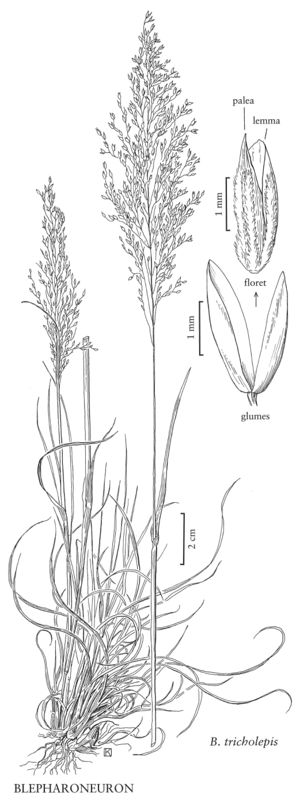Difference between revisions of "Blepharoneuron tricholepis"
imported>Volume Importer |
imported>Volume Importer |
||
| Line 39: | Line 39: | ||
|publication year= | |publication year= | ||
|special status= | |special status= | ||
| − | |source xml=https://bitbucket.org/aafc-mbb/fna-data-curation/src/ | + | |source xml=https://bitbucket.org/aafc-mbb/fna-data-curation/src/200273ad09963decb8fc72550212de541d86569d/coarse_grained_fna_xml/V25/V25_76.xml |
|subfamily=Poaceae subfam. Chloridoideae | |subfamily=Poaceae subfam. Chloridoideae | ||
|tribe=Poaceae tribe Cynodonteae | |tribe=Poaceae tribe Cynodonteae | ||
Latest revision as of 18:58, 11 May 2021
Plants perennial; densely cespitose. Culms 10-70 cm, erect, glabrous and smooth or scabrous just below the nodes. Ligules (0.3)0.7-2(2.7) mm, hyaline to membranous, entire; blades 1-15 cm long, 0.6-2.5 mm wide, scabrous. Panicles 3-25 cm long, 1-10 cm wide; branches ascending; pedicels 2-9 mm, straight or flexuous. Glumes (1.5)1.8-2.6(3) mm, often appearing 3-veined because of the characteristic infolding of the margins; lemmas (2)2.3-3.5(3.9) mm; anthers 1.2-2.1 mm, brownish. Caryopses 1.2-1.4 mm. 2n = 16.
Distribution
Utah, Ariz., Colo., N.Mex., Tex.
Discussion
Blepharoneuron tricholepis grows in dry, rocky to sandy slopes, dry meadows, and open woods in pine-oak-madrone forests from Utah and Colorado to the state of Puebla, Mexico, at elevations of 700-3660 m. It flowers from mid-June through November.
Selected References
None.
